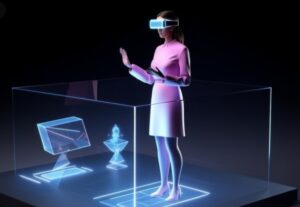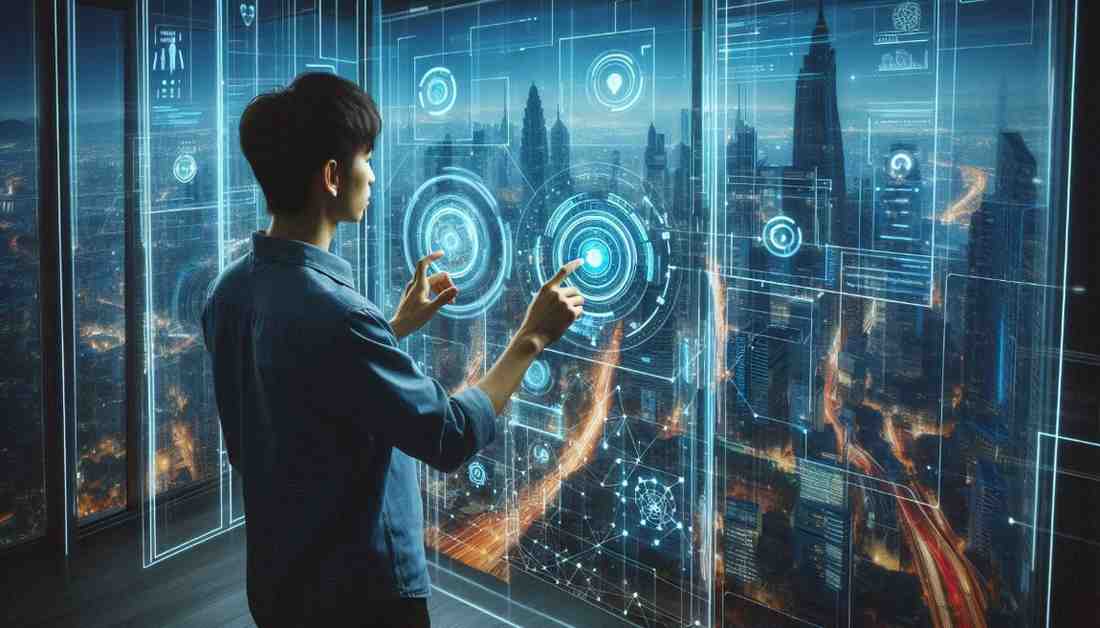Introduction to Interactive Sensors
Overview of Sensor Technology
Sensor technology refers to devices that detect and respond to physical input from the environment. This input can come from various sources like light, heat, motion, moisture, pressure, or any other environmental phenomena. Sensors convert these inputs into signals that can be interpreted and used by electronic systems.
Importance of Interactive Sensors
Interactive sensors play a crucial role in modern technology by allowing devices to interact seamlessly with their surroundings. These sensors are essential for creating intuitive user experiences in various applications, from smartphones to smart homes. They enhance automation, improve efficiency, and contribute to the development of smarter, more responsive technologies.

Types of Interactive Sensors
Touch Sensors
Touch sensors detect physical touch or pressure and are commonly used in devices like smartphones and tablets. They enable intuitive interfaces and user-friendly designs, allowing users to interact directly with screens and devices.
Motion Sensors
Motion sensors detect movement and are widely used in security systems, gaming consoles, and automated lighting systems. They play a vital role in enhancing safety, convenience, and user engagement in various applications.
Proximity Sensors
Proximity sensors detect the presence of objects or individuals without physical contact. They are used in smartphones for screen activation, in automotive applications for obstacle detection, and in industrial settings for automation and safety.
Applications of Interactive Sensors in Various Industries
Consumer Electronics
Interactive sensors are integral to consumer electronics, enabling features like touchscreens, gesture controls, and smart home devices. They enhance user interaction, provide convenience, and improve the overall user experience.
Healthcare
In healthcare, interactive sensors are used in wearable devices to monitor vital signs, in diagnostic tools for patient monitoring, and in assistive technologies to improve patient care and health outcomes.
Automotive Industry
The automotive industry relies on interactive sensors for advanced driver-assistance systems (ADAS), in-vehicle entertainment systems, and safety features like collision avoidance and lane-keeping assistance.
Advancements in Sensor Technology
Innovations in Sensor Materials
Recent advancements in sensor materials have led to the development of more sensitive, durable, and flexible sensors. These materials enhance the performance and reliability of interactive sensors in various applications.
Integration with IoT and AI
The integration of sensor technology with the Internet of Things (IoT) and artificial intelligence (AI) has revolutionized how sensors are used. This combination enables smarter, more connected systems that can learn and adapt to user behaviors and environmental changes.
Future Trends in Interactive Sensors
Emerging trends in sensor technology include the development of ultra-thin sensors, flexible electronics, and advancements in miniaturization. These trends are expected to drive innovation and open new possibilities for interactive sensors in various fields.
Challenges and Solutions in Sensor Technology
Common Challenges in Sensor Development
Developing interactive sensors involves challenges such as ensuring accuracy, minimizing power consumption, and addressing interference issues. These challenges can impact the performance and reliability of sensor-based systems.
Solutions and Technological Advances
Technological advances are addressing these challenges through improved sensor design, the use of advanced materials, and the integration of machine learning algorithms. These solutions enhance the functionality and efficiency of interactive sensors.
Case Studies: Successful Implementations of Interactive Sensors
Interactive Sensors in Smart Homes
Smart home systems use interactive sensors for automation, security, and energy management. Case studies highlight how these sensors create more efficient, safe, and user-friendly living environments.
Wearable Technology and Interactive Sensors
Wearable devices equipped with interactive sensors monitor health metrics, track fitness activities, and provide personalized feedback. These case studies demonstrate the impact of sensor technology on personal health and well-being.
The Future of Interactive Sensors and Sensor Technology
Predictions for the Next Decade
Miniaturization: Continued efforts to make sensors smaller, more efficient, and more cost-effective, enabling their integration into a broader range of devices and applications.
Integration with AI: Enhanced AI algorithms will allow sensors to interpret data more intelligently, leading to more responsive and adaptive systems.
Expansion into New Fields: Interactive sensors will find new applications in fields such as augmented reality (AR), virtual reality (VR), robotics, and advanced manufacturing processes.
Enhanced Connectivity: With the proliferation of 5G and IoT technologies, sensors will become more interconnected, facilitating real-time data exchange and more sophisticated analytics.
These trends suggest a future where interactive sensors are ubiquitous, driving innovation across multiple industries and improving daily life through smarter, more efficient technology.
The Role of Interactive Sensors in Smart Cities
Smart cities rely on a network of interactive sensors to enhance urban living. These sensors contribute to:
Intelligent Infrastructure: Sensors monitor and manage utilities like water, electricity, and waste management, ensuring efficient use and reducing wastage.
Traffic Management: Traffic sensors optimize flow, reduce congestion, and enhance public transportation systems.
Public Safety: Security sensors improve surveillance, emergency response, and disaster management.
Environmental Monitoring: Sensors track air quality, noise levels, and other environmental factors, helping cities maintain healthy living conditions.
Energy Efficiency: Smart grids and energy management systems use sensors to optimize energy use, integrating renewable sources and reducing carbon footprints.
As smart cities evolve, the integration of advanced sensor technology will be crucial in creating sustainable, efficient, and livable urban environments.
Conclusion
Interactive sensors and sensor technology are transforming the way we interact with the world around us. From consumer electronics to smart cities, their applications are vast and continually expanding. Advancements in materials, AI integration, and IoT connectivity are driving this evolution, promising a future where technology is more intuitive, responsive, and seamlessly integrated into our lives.
The challenges in sensor technology development are being met with innovative solutions, paving the way for more reliable and efficient systems. As we look ahead, the role of interactive sensors will only grow, heralding a new era of technological advancement that will shape industries, enhance everyday experiences, and contribute to a smarter, more connected world.
Interactive sensors and sensor technology are poised to revolutionize various aspects of daily life and industry, providing smarter, more efficient, and more intuitive solutions. As these technologies advance, they will become increasingly embedded in our environments, offering new levels of convenience, safety, and functionality.
Key Takeaways:
Versatility: Interactive sensors are incredibly versatile, finding applications in consumer electronics, healthcare, automotive, industrial automation, and more.
User Experience: By enabling more natural and intuitive interactions, these sensors improve user experience across devices and systems.
Innovation: Continuous advancements in materials, AI, and IoT are driving innovation in sensor technology, leading to smarter, more capable sensors.
Challenges and Solutions: Despite the challenges in sensor development, technological advances are providing robust solutions, ensuring sensors are more accurate, efficient, and reliable.
Future Outlook: The future of interactive sensors is bright, with potential for even greater integration into smart cities, advanced manufacturing, and emerging fields like AR, VR, and robotics.


